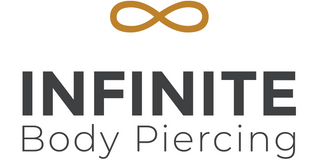Shopping online is easy, quick, and convenient, but if you’re not familiar with how body jewelry is measured, determining the jewelry size you need can be difficult. And wearing the correct size of body jewelry is important, as jewelry that is too small will cause the piercing to shrink (and can be unhealthy for the piercing), while trying to insert jewelry that is too large can cause pain and trauma.
Because anatomy and piercings can vary widely, there is not a standard size for each piercing. Plus, different piercers will use different jewelry for the same piercing. Every piercing on every person is different, and each piercing needs different jewelry.
If you know what size jewelry your piercing needs, great; go ahead and enjoy our online web store. But if you are unsure of what size you need (and visiting your nearest piercer is not an option), check out our sizing tips below for all the measurements you need to consider when selecting body jewelry.
Jewelry Thickness, or “Gauge”
In the United States, body jewelry thickness is measured using the American wire gauge (AWG) system and the imperial system (fractions of an inch). Since we’re a U.S.-based retailer, our jewelry is measured this way first, and in metric (millimeter) measurements second—even though some of our manufacturers produce it in metric increments.
Jewelry we sell for initial piercings (rings, barbells, etc.) will be true-to-size and measured by gauge. Jewelry for stretched piercings (plugs, etc.) will be sized in fractions of an inch with approximate metric equivalents, and may deviate from the advertised size slightly depending on type of jewelry and manufacturer. (This is especially true of jewelry made from organic materials and manufactured outside of the United States.)
Barbells, Labrets, and Press-Fit Posts
After thickness, the length of straight posts—barbells, labrets, or press-fit posts—is measured as the length of the shaft between the two ends (not the overall length of the shaft). This is the wearable surface of the post.
Rings (and Circular Barbells)
Circular jewelry is measured by the inside diameter of the ring (and not the outside diameter). This is true for fixed bead rings, captives, circular barbells, seamless rings, and septum clickers.
Curved Barbells
Curved barbells are measured as the straight distance between the ends (not the length of the curve between the posts). This applies to jeweled navel curves as well.
Threaded Ends
When you buy threaded or press-fit jewelry from us, we sell the post and the ends separately. This allows you to customize your jewelry and get exactly what you want. This also allows you to purchase pieces individually, ultimately saving you money, but it does require a little more knowledge when ordering.
Threaded and threadless ends consist of two measurements: thickness—the size shaft the end fits—and ball or stone size. (Balls are usually measured in fractions of an inch, while set stones are usually measured in millimeters.) To purchase ends, just match up the thickness (gauge) of the post to the thickness of the end. Threaded ends that we sell will fit any of the threaded posts we sell, but we can’t guarantee that our products will fit jewelry purchased elsewhere, as there is not a standard threading across all manufacturers. If you have any questions about which ends fit which posts, feel free to contact us.
Plugs and Eyelets
Plugs and eyelets (whether straight, single-, or double-flared) are measured at the narrowest point (the wearable surface). Flares on plugs can be anywhere from half a size to one full size larger than the wearable surface.
Ear Weights
In our online store, the “gauge” size will refer to what the minimum size needed to wear the jewelry. (You can be bigger and wear them, but not smaller.) We’ll also list the weight, where applicable.
Sizing: Conversion Chart
If you’re trying to convert jewelry sizes from AWG or imperial to metric (or vice-versa), check out the chart below.
|
American Wire Gauge / Imperial |
Metric (millimeters) |
Infinite Sizing |
|
18g |
1mm |
18g (1mm) |
|
16g |
1.3mm |
16g (1.2mm) |
|
14g |
1.6mm |
14g (1.6mm) |
|
12g |
2.1mm |
12g (2mm) |
|
10g |
2.6mm |
10g (2.5mm) |
|
8g |
3.3mm |
8g (3mm) |
|
6g |
4.1mm |
6g (4mm) |
|
4g |
5.2mm |
4g (5mm) |
|
2g |
6.5mm |
2g (6mm) |
|
1g |
7.4mm |
1g (7mm) |
|
0g |
8.3mm |
0g (8mm) |
|
00g |
9.3mm |
00g (9mm) |
|
000g |
10.4mm |
000g (10mm) |
|
7/16” |
11.1mm |
7/16″ (11mm) |
|
½” |
12.7mm |
1/2″ (12.5mm) |
|
9/16” |
14.3mm |
9/16″ (14mm) |
|
⅝” |
15.9mm |
5/8″ (16mm) |
|
11/16” |
17.5mm |
11/16″ (18mm) |
|
¾” |
19.1mm |
3/4″ (19mm) |
|
13/16” |
20.6mm |
13/16″ (20mm) |
|
⅞” |
22.2mm |
7/8″ (22mm) |
|
15/16” |
23.8mm |
15/16″ (24mm) |
|
1” |
25.4mm |
1″ (25mm) |




